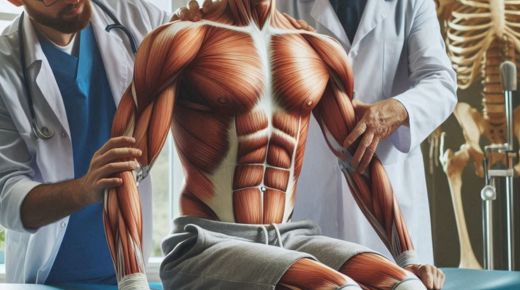5 Effective Physiotherapy Techniques for Post-Stroke Recovery
Recovering from a stroke can be a challenging journey, but physiotherapy plays a vital role in regaining independence and improving overall quality of life. Post-stroke physiotherapy focuses on enhancing mobility, strength, coordination, and functional abilities through tailored rehabilitation techniques. This article outlines five effective physiotherapy techniques that can significantly aid stroke recovery.
1. Task-Specific Training
Task-specific training is a fundamental approach in post-stroke physiotherapy that focuses on helping patients regain their ability to perform daily activities. This technique involves practicing specific tasks that the individual struggles with due to stroke-related impairments.
For example, a therapist may work with a patient on walking, standing up from a chair, or performing activities like dressing and eating. The exercises are designed to mimic real-life situations, making them more relevant and effective for the patient. By focusing on meaningful tasks, patients can improve their motor skills and confidence, which are essential for achieving greater independence.
2. Constraint-Induced Movement Therapy (CIMT)
Constraint-Induced Movement Therapy (CIMT) is an innovative technique designed to promote the use of the affected limb after a stroke. In this method, the unaffected arm is restrained, forcing the patient to use the weaker limb in daily activities.
CIMT encourages neuroplasticity—the brain’s ability to adapt and reorganize itself—by promoting the use of the affected side. This technique has been shown to enhance motor function and improve functional abilities in stroke survivors. While it can be challenging, the motivation to perform everyday tasks with the affected limb leads to significant gains in strength and coordination over time.
3. Strengthening Exercises
Strengthening exercises are a crucial component of post-stroke physiotherapy, as they help rebuild muscle strength and improve overall physical function. Stroke survivors often experience weakness on one side of the body, which can hinder mobility and daily activities.
A physiotherapist can develop a personalized strength training program that targets specific muscle groups affected by the stroke. Exercises may include resistance training with bands, weights, or body weight to enhance muscle strength. Strengthening exercises not only improve physical capabilities but also support joint stability and reduce the risk of falls.
4. Balance and Coordination Training
Balance and coordination are often compromised after a stroke, increasing the risk of falls and injuries. Physiotherapists employ various techniques to enhance balance and coordination, helping patients regain stability and confidence in their movements.
Training may involve activities such as standing on one leg, walking on uneven surfaces, or using balance boards. Therapists may also integrate dynamic balance exercises, such as reaching or turning while standing, to simulate real-world scenarios. By focusing on balance and coordination, patients can improve their mobility and reduce the fear of falling.
5. Functional Electrical Stimulation (FES)
Functional Electrical Stimulation (FES) is a cutting-edge technique that uses electrical impulses to stimulate muscle contractions in individuals with limited mobility. This method is particularly beneficial for stroke survivors with muscle weakness or paralysis.
FES can be applied during rehabilitation exercises to enhance muscle activation, promote movement, and improve muscle strength. By integrating FES with conventional therapy, patients can experience more effective rehabilitation outcomes. Research has shown that FES can lead to improvements in motor function, making it a valuable addition to post-stroke physiotherapy.
Post-stroke recovery is a complex process, but effective physiotherapy techniques can significantly enhance the rehabilitation journey. Task-specific training, Constraint-Induced Movement Therapy, strengthening exercises, balance and coordination training, and Functional Electrical Stimulation are all powerful tools that physiotherapists can use to help stroke survivors regain their independence and improve their quality of life.
Engaging in a tailored rehabilitation program under the guidance of a skilled physiotherapist can make a remarkable difference in recovery outcomes. By focusing on individual needs and setting realistic goals, stroke survivors can achieve significant gains in mobility, strength, and overall functioning. Early intervention and consistent practice of these techniques can pave the way for a more fulfilling life after a stroke, empowering individuals to regain control and achieve their personal rehabilitation goals.
It is very important to do the necessary tests during pregnancy to avoid as many future problems as possible. Your obstetrician-gynecologist will advise you on what is needed according to your needs.

